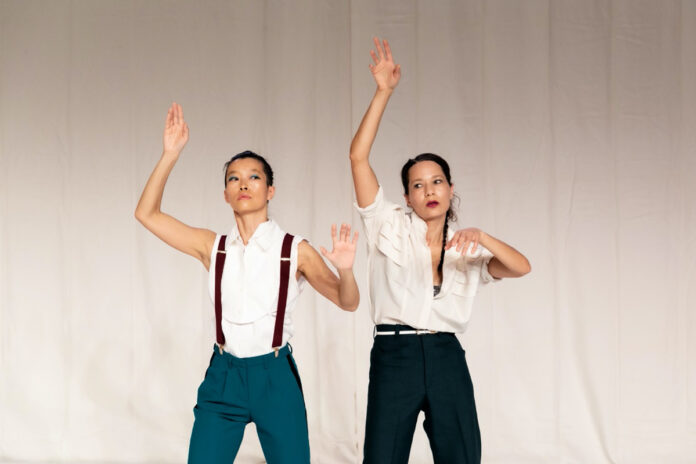
Justine A. Chambers and Laurie Young’s modern dance performance entitled One Hundred More was powerful and moving, providing a refreshing example of art as activism by two racialized women.
Hosted by the Ottawa Dance Directive at the Ottawa Arts Court in collaboration with the National Arts Centre, One Hundred More was a labour of love by all who worked on it. Throughout the dance, the artists played with gestures commonly used in moments of struggle against systemic oppression, turning something very dark into something beautiful.
As the dancers and production team grappled with what it means to resist, it became starkly evident to all viewers that this is the type of art we need in today’s unstable sociopolitical climate.
As the audience entered the theatre, the dancers were already onstage, looking directly at all who entered while pacing around the stage and counting to 100 over and over again. As the performance started, Chambers and Young continued to hold the audience in their grasp for every second of the piece. The energy coursing through them filled the space and made the audience feel like they were part of the performance (and therefore part of the resistance) taking place onstage.
While the performance had no linear plot, by no means did this equate to no story being told.
The piece’s focal point was the hands up gesture, as the dancers powerfully evoked the stance often seen in the context of police violence against racialized people. Chambers’ and Young’s hands and arms assumed this position frequently throughout the piece.
Chambers’ and Young’s hands never rested, and were constantly pulsing, twitching, pushing and pulling. The piece was an emotional rollercoaster, with moments of sorrow, joy, laughter, pain and anger. In short, it encapsulated all it takes to be an activist in today’s world.
The performance was set to pulsing hip-hop beats that emulated a heartbeat or a ticking clock.
At one moment, the music cut out completely.
This was by far the most powerful moment in the piece: Chambers and Young stood in silence for several minutes with their arms held up in a position of surrender, with only the sound of their own laborious breathing to keep them company. The dancers were able to do just as much with the absence of sound and movement as they were in its presence.
Chambers and Young made their highly technical movements look seamless and easy. Their chemistry was incredible; while the two dancers were rarely doing the same movements, they were always connected and energy was constantly transferring between them. It was clear that the two women have a strong friendship and love for each other, and their dynamic made the performance all the more enjoyable.
The dancing itself was accompanied by a simple set, consisting only of a white curtain across the back and sides of the stage. The minimalist nature of the set ensured that all eyes were on the dancers, who stood out boldly against their surroundings, wearing brightly coloured pants, white button down shirts and suspenders.
The lighting, done by Emese Csornai, was a combination of traditional coloured stage lights and strips of white light shining from the bottom of the curtain. At times, the lights resembled daylight streaming through the curtains, and at other times they mimicked trembling flashes of lightning, echoed by the pulsing beat of the music. The lights came together with the music, performed by Victoria Cheong, to compliment Chambers’ and Young’s choreography. The technical elements seamlessly morphed with the dancers as the emotional tone shifted throughout the piece.
One Hundred More was a tremendously beautiful yet important piece of work. In our tumultuous day and age, artistic resistance is desperately needed, and has the power to inspire others to take action and join them in the fight for a better future.
Featured image provided by Lana Morton.





